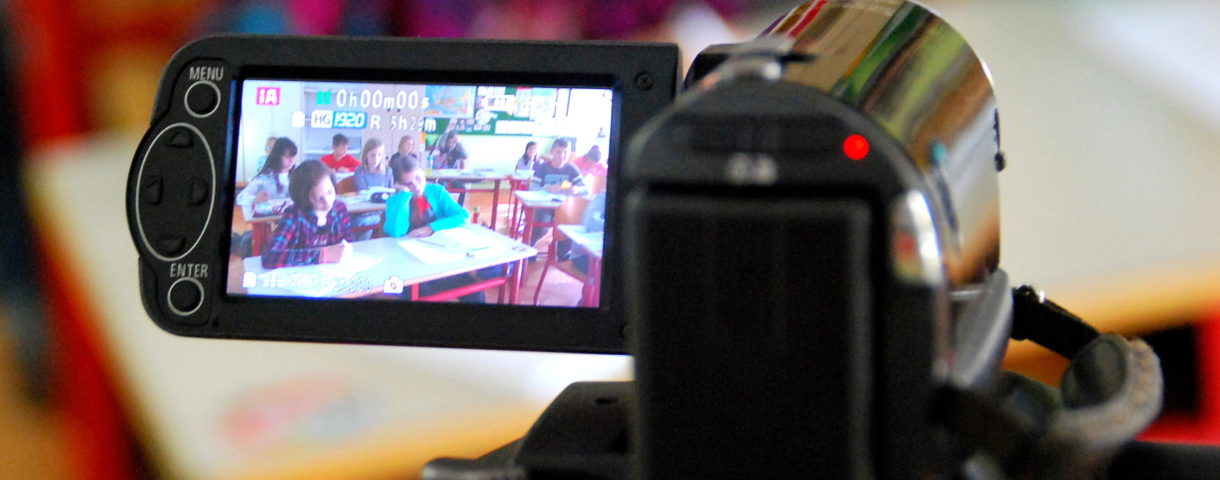Introduction
A video collage is a combination of photos and / or short video clips set to music. It’s an easy and effective way of showing a place, documenting an event or presenting a project. And it’s the simplest way of making a video.
| |
Vision in action |
|
|
||
Equipment and tools
The basic equipment you need to make a video collage is a camera. A tripod and additional lights will help if you want to experiment with your shots. You’ll also need a computer and a simple editing programme.
Main section
Making a video collage is a simple and cheap way of focusing on a particular subject matter. It can also be something that you do just for yourself; you can produce something nice very quickly and have a lot of fun with it.
Video collages are often used to make family videos and holiday films, but they are also very useful in presenting projects, places and events. Photos or video clips are combined with music, and sometimes a voice-over or graphics that give more information.
It’s important to get the best visual material you can; every clip or photo you use has to be good.
Knowledge of the basic concepts of editing and some idea of staging can help to make the final product better. But even if you don’t have specialist skills you can still make a good video collage simply using your intuition.
You can use free photo- and / or video-editing programmes like Picasa and Movie maker to create a video collage, including adding titles and music. There are many free editing programmes, but there are limits to what they can do, and they’re not suitable for more complex productions.
To make a visually interesting video collage, apply the basic principles of:
- framing for film – use different types of framing, from detail to total.
- camera movement – a variety of camera movements can make your collage more dynamic. Remember to film static video shots as well, where the camera itself doesn’t move but there might be some movement in the scene you’re filming. Static shots should last at least 3–5 seconds each. At the editing stage, combine them with shots in which there is camera movement.
- composition and colour – every shot should have good composition. Try to choose a colour range that matches what you want to express.
- editing – for example, combining shots with different types of framing so they fit well together.
- picture effects – added at the editing stage, they can help to make visuals more interesting and colours richer, or obtain a certain picture style.
- Editing the collage so that shots and pictures change to the rhythm of the music can create a pleasing effect.
- If you’re using picture effects, choose a maximum of 3 and make sure they fit together.
- Export the video to an appropriate format and share it with others (see Publishing your video).
Examples
Video: Video collage of an event (LIJAmedia)
[vimeo clip_id=78707391 width=1000 height= ]
Video: Video collage of nature shots (Andre Meyer)
Video: Video collage of random outdoor scenes (Grainaudio)
Exercises
Make a video collage about an event, place or project. Edit it, add suitable music, and share it with friends and others who might be interested.
If you have time, you could try to achieve a more interesting result by experimenting with the camera, colours, composition and light, as well as at the editing stage.
Common mistakes
- Not using enough different types framing, for example no totals or details. It’s difficult for viewers to know where they are in the video and to understand the information you want to share.
- The collage is too long and people get bored watching it.
- Similar shots are repeated too often; there’s a lack of visual interest.
- Poor editing. There are big differences in framing types, colours, light and camera movement from one shot to the next.
- Individual shots are too long, which makes them boring to watch, or too short, and the viewer doesn’t have enough time to understand them.
Related topics and link to external resources
Chapters: Camera basics / Camera advanced / Composition and colour / Basics of Lighting / Film editing/ Free internet resources / Encoding files for archiving, online uploads and video discs
Methodology
Making a video collage is a great introduction to camera work, and one of the best ways to get practical experience of film-making.
You might have a great idea for a bigger project, but you won’t be able to express it on paper or shoot complex scenes until you gain a bit more experience. And if you’re working with children or young people, you’ll find it hard to keep them engaged if there’s a lot to prepare, the process is slow, and they have to wait around or help during the lengthy editing stage.
A video collage helps to keep things simple and achievable. There’s no need to spend a lot of time preparing – just go out and start filming. You and your group will be able to keep interest levels up, and getting a good result quickly serves as motivation for working on other, more complex film projects.
Terminology
framing, camera positions, movement, composition


